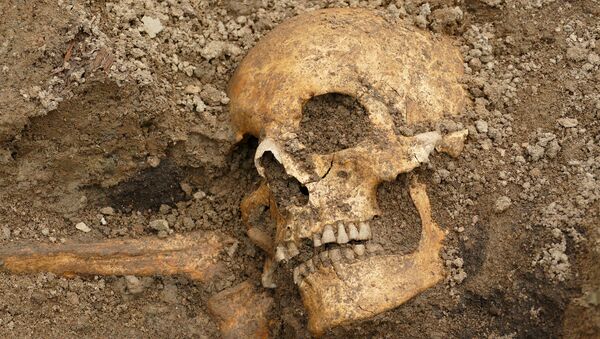Archaeologists from Cambridge University sparked a decades-old debate about the burial rites of Neanderthals after they unearthed a skeleton belonging to the archaic humans in Shanidar cave in Iraq. They said this is the first articulated Neanderthal skeleton to be found in more than 20 years. The remains consist of a skull, the hands, upper thorax and teeth, which researchers say belonged to a "middle-aged to older adult".
Although scientists admit that their find overjoyed them, they were more excited to find clumps of ancient pollen, which were placed around the skeleton. In addition, researchers were surprised by the semi-reclining position of the body and a stone behind the head. Scientists have long debated whether Neanderthals buried their dead intentionally and gave meaning to these rituals.
Professor Graeme Barker, from Cambridge University's McDonald Institute of Archaeology, who took part in the excavation, said there is evidence that Shanidar Z, this what researchers named the skeleton, was buried intentionally.
This is not the first time that archaeologists have found the remains of Neanderthals in Shanidar cave in Iraq. Sixty years ago scientists uncovered ten other skeletons; the latest discovery makes researchers believe that archaic humans were more sophisticated than scientists previously thought and that the group lived near the cave and used it as a burial site.
"In recent years we have seen increasing evidence that Neanderthals were more sophisticated than previously thought, from cave markings to their use of decorative shells and raptor talons. If Neanderthals were using Shanidar cave as a site for the repeated ritual interments of their dead, it would suggest cultural complexity of a high order", said Dr Emma Pomeroy, from Cambridge University's department of archaeology and lead author on the study.



